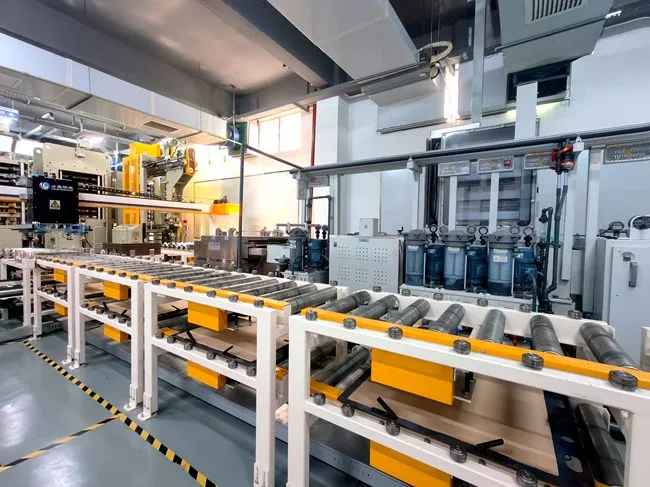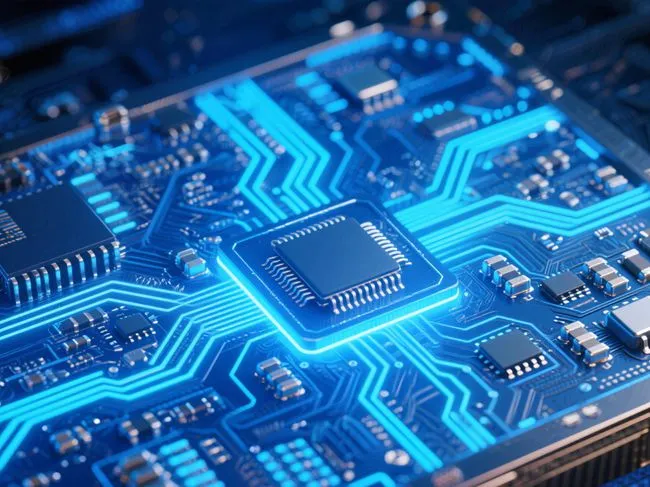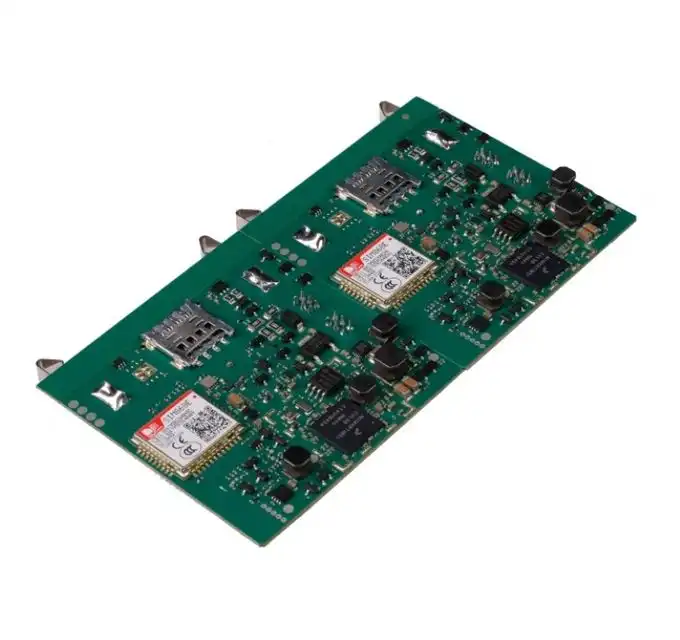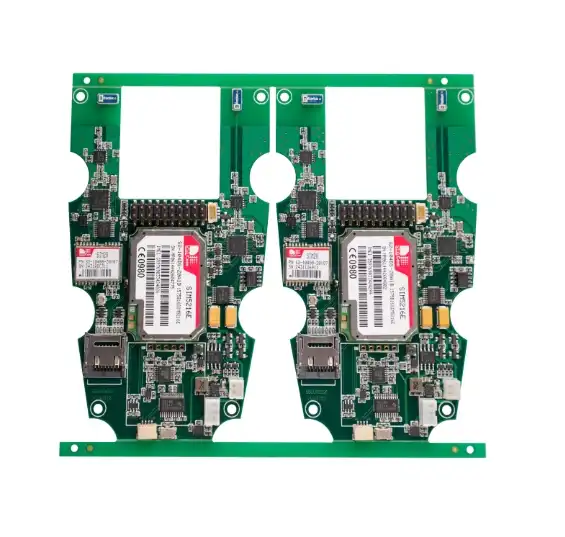Evaluating Technical Capabilities and Expertise
The first step in selecting a PCB assembly service is to assess their technical capabilities and expertise. A provider with advanced engineering capabilities can handle complex designs and ensure high-quality results. Look for services that offer high-density stack-up options, such as 2-48 layer boards with blind and buried vias. This level of complexity is essential for applications in 5G technology, industrial control systems, medical devices, and automotive electronics.
Moreover, consider the assembly service's proficiency in various PCB types. A versatile provider should be able to handle multilayer PCBs, high-density interconnect (HDI) boards, and flexible or rigid-flex PCBs. This versatility ensures that they can accommodate your specific project requirements, whether you need high-frequency designs for signal integrity or automotive-grade PCBs for enhanced reliability.
Advanced Manufacturing Technologies
The quality of PCB assembly heavily relies on the manufacturing technologies employed. Look for providers equipped with state-of-the-art facilities featuring technologies like LDI (Laser Direct Imaging) laser exposure systems, vacuum lamination processes, and flying probe testers. These advanced tools enable precise fabrication and thorough testing, ensuring adherence to stringent industry standards such as IPC-6012 Class 3.
Furthermore, consider the provider's capabilities in terms of trace and spacing precision. Services offering 3/3mil trace/spacing and ±7% impedance control demonstrate a high level of manufacturing precision, which is crucial for high-performance electronic products.
Quality Assurance and Inspection Processes
Quality control is paramount in PCB assembly. A reliable service provider should have robust inspection and testing processes in place to ensure the highest quality of assembled boards. Look for providers that utilize advanced inspection technologies such as Automated Optical Inspection (AOI) and X-ray inspection. These technologies can detect issues that might be invisible to the naked eye, such as solder joint defects or component misalignment.
In-Circuit Testing (ICT) and functional testing capabilities are also crucial. These tests verify the electrical performance of the assembled PCBs, ensuring they meet the required specifications. Additionally, consider providers that offer reliability testing services, which can help predict the long-term performance and durability of your products.
Adherence to Industry Standards
Ensure that the PCB assembly services adheres to recognized industry standards. Compliance with standards like IPC-A-610 for acceptability of electronic assemblies demonstrates a commitment to quality and reliability. For specialized applications, such as automotive or medical devices, look for providers with relevant certifications like ISO/TS 16949 or ISO 13485.
It's also beneficial to choose a provider that can support various reliability grades, from commercial to industrial and automotive. This flexibility ensures that your assembled PCBs meet the specific reliability requirements of your target industry.
Comprehensive Services and Production Flexibility
Opting for a PCB assembly service that offers comprehensive, end-to-end solutions can significantly streamline your production process. Look for providers that offer a full range of services, from PCB manufacturing and component procurement to assembly and final testing. This one-stop approach can reduce lead times, minimize logistics complexities, and ensure better quality control throughout the production process.
Consider the provider's capabilities in terms of production volume and turnaround time. A versatile assembly service should be able to handle both small-batch prototypes and large-scale production runs. Quick-turn capabilities for prototype PCBs can be particularly valuable during the product development phase, allowing for rapid iteration and testing.
Component Procurement and BOM Management
An often-overlooked aspect of PCB assembly is component procurement and Bill of Materials (BOM) management. Choose a provider that offers comprehensive component sourcing services. This can include BOM optimization to suggest cost-effective alternatives or more readily available components, helping to reduce overall production costs and minimize supply chain disruptions.
Look for assembly services that have established relationships with reputable component suppliers. This can ensure access to high-quality components and potentially provide cost savings through bulk purchasing power. Additionally, consider providers that offer component kitting services, which can further streamline the assembly process and reduce the risk of component mix-ups.
Conclusion
Selecting the right PCB assembly service is crucial for ensuring the quality, reliability, and cost-effectiveness of your electronic products. By carefully evaluating technical capabilities, quality assurance processes, and the range of services offered, you can choose a provider that best meets your specific needs. Remember to consider factors such as advanced manufacturing technologies, inspection processes, adherence to industry standards, and production flexibility. A comprehensive, one-stop PCB assembly service can provide significant advantages in terms of efficiency, quality control, and overall project management. When searching for a PCB assembly supplier or manufacturer, prioritize those offering cutting-edge technology, rigorous testing procedures, and a proven track record in delivering high-quality assembled PCBs across various industries.

FAQ
What is the typical turnaround time for PCB assembly services?
Turnaround times can vary depending on the complexity of the project and the provider's capabilities. For rapid prototyping, some services offer turnaround times as quick as 24-48 hours. For larger production runs, lead times can range from a few days to several weeks.
Can PCB assembly services handle both SMT and through-hole components?
Yes, many PCB assembly providers offer hybrid assembly capabilities, combining Surface Mount Technology (SMT) and through-hole assembly techniques to accommodate various component types and design requirements.
What quality control measures are typically used in PCB assembly?
Common quality control measures include Automated Optical Inspection (AOI), X-ray inspection, In-Circuit Testing (ICT), and functional testing. These processes help ensure the quality and reliability of the assembled PCBs.
Advanced PCB Manufacturing Capabilities | Ring PCB
Ring PCB Technology Co., Limited offers state-of-the-art PCB manufacturing and assembly services, leveraging advanced technologies for high-density, multi-layer boards. Our smart manufacturing facility, equipped with LDI laser exposure and vacuum lamination systems, ensures precision and quality adhering to IPC-6012 Class 3 standards. As a leading PCB manufacturer and assembly factory, we provide comprehensive solutions for complex electronic projects. For inquiries, contact us at [email protected].
References
1. Johnson, M. (2022). "Advanced PCB Assembly Techniques for High-Reliability Electronics." Journal of Electronic Manufacturing, 45(3), 112-128.
2. Smith, A. & Brown, R. (2021). "Quality Assurance in Modern PCB Assembly: Best Practices and Technologies." International Conference on Electronics Manufacturing, 78-92.
3. Lee, S. et al. (2023). "Optimizing PCB Assembly Services for Industry 4.0: A Comprehensive Review." IEEE Transactions on Electronics Packaging Manufacturing, 36(2), 205-220.
4. Thompson, E. (2022). "Selection Criteria for High-Performance PCB Assembly Providers in Aerospace and Defense Industries." Aerospace Manufacturing Technology Quarterly, 18(4), 67-83.
5. Garcia, C. & Wong, L. (2023). "The Impact of Advanced Inspection Technologies on PCB Assembly Quality and Reliability." Journal of Quality in Electronics Design, 29(1), 34-49.






